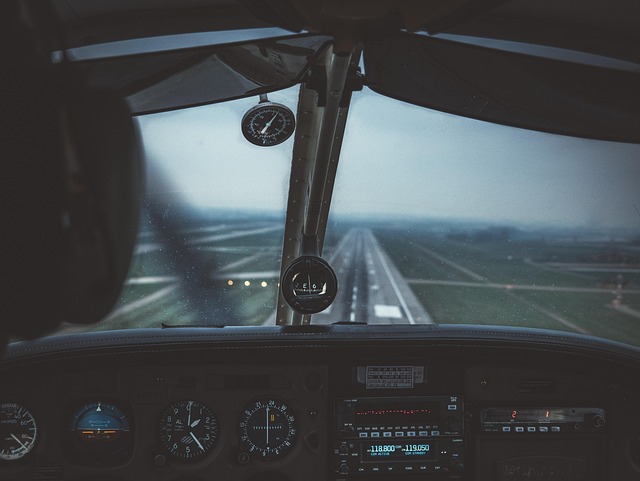Learn What Pilot Training Offers Aspiring Aviators In 2025 - A Comprehensive Guide
The journey to becoming a pilot has evolved significantly in recent years, with 2025 bringing new opportunities and challenges for aspiring aviators. Pilot training programs have adapted to incorporate advanced technology, changing industry demands, and evolving regulatory requirements. For those dreaming of taking to the skies professionally, understanding the current landscape of flight education is essential for making informed decisions about their aviation career path. This comprehensive guide explores what pilot training offers in 2025, from program types to costs and career prospects.

What Pilot Training Offers Aspiring Aviators In 2025
The pilot training landscape in 2025 offers more diverse pathways than ever before. Traditional flight schools now operate alongside university aviation programs, accelerated training academies, and military-to-civilian transition programs. Modern training incorporates advanced flight simulators with unprecedented realism, allowing students to experience various flight conditions before entering an actual cockpit. Digital learning platforms have also transformed ground school education, with interactive content replacing static textbooks. Perhaps most significantly, sustainability has become a core component of pilot education, with training on electric aircraft and eco-friendly operational procedures becoming standard at forward-thinking institutions.
Types of Pilot Training Programs
Flight training programs in 2025 fall into several distinct categories, each with unique advantages for different career goals. Part 141 flight schools follow rigid FAA-approved curriculums with structured training sequences and typically offer faster completion times, while Part 61 programs provide more flexibility in scheduling and personalized instruction pacing. University aviation degrees combine flight training with academic education, offering bachelor’s degrees alongside commercial pilot qualifications. Accelerated programs, increasingly popular in 2025, compress commercial pilot training into 9-12 months for career-changers seeking efficient pathways. Additionally, specialized programs focusing on specific aircraft types or operational environments (like mountain or bush flying) have gained prominence for pilots targeting niche aviation sectors.
Pilot Training Costs in 2025
Training costs remain a significant consideration for aspiring pilots in 2025. The financial investment varies substantially based on program type, location, and ultimate career goals. Comprehensive training from zero experience to commercial pilot with multi-engine and instrument ratings typically ranges between $70,000 and $100,000 at independent flight schools. University aviation degree programs generally cost between $120,000 and $200,000, including both flight training and academic coursework. The most prestigious accelerated academies with airline partnerships may charge $85,000 to $150,000 for their career pipeline programs.
| Training Program Type | Average Cost Range | Typical Duration | Additional Certifications Included |
|---|---|---|---|
| Part 61 Flight School | $70,000-$90,000 | 18-24 months | Varies by school |
| Part 141 Academy | $75,000-$100,000 | 12-18 months | Multi-engine, Instrument |
| University Aviation Degree | $120,000-$200,000 | 4 years | Bachelor’s Degree, CFI options |
| Accelerated ATP Program | $85,000-$150,000 | 9-12 months | Multi-engine, Instrument, ATP CTP |
| Military Transition Program | $30,000-$50,000 | 3-6 months | Civilian certifications |
Prices, rates, or cost estimates mentioned in this article are based on the latest available information but may change over time. Independent research is advised before making financial decisions.
Pros and Cons of Pilot Training For Aspiring Aviators in 2025
Pursuing pilot training in 2025 presents distinct advantages and challenges worth considering. On the positive side, the aviation industry has rebounded from earlier challenges with major airlines projecting significant hiring needs through 2030. Advanced simulation technology has made training more efficient and comprehensive than ever before. Additionally, numerous scholarship and financial aid opportunities have emerged specifically targeting underrepresented groups in aviation.
However, challenges remain. The financial investment continues to be substantial without guaranteed returns. Training programs vary widely in quality and outcomes, requiring careful research. Physical and mental health standards remain stringent, potentially creating career uncertainty. Most critically, the time commitment remains significant—most successful pilots dedicate 18-36 months of intensive study and practice before securing their first professional position, requiring both patience and financial stability during the training period.
Pilot Training Career Prospects and Opportunities
Career prospects for newly trained pilots in 2025 show promising trends across multiple aviation sectors. Regional airlines continue to serve as primary entry points for commercial pilots, with first-year salaries ranging from $50,000 to $70,000. Major airlines have streamlined their hiring pipelines, with many establishing direct partnerships with training academies for more predictable career progression. Beyond airlines, emerging opportunities include drone operations management, which has evolved into a distinct career path requiring specialized pilot certifications. Corporate aviation remains strong, with fractional ownership companies expanding their fleets and pilot teams. Flight instruction positions, while traditionally viewed as stepping stones, have seen improved compensation and career development pathways as schools compete for qualified instructors during a time of high training demand.
The pilot certification ecosystem has also evolved, with new endorsements specifically addressing automation management, advanced avionics, and sustainable aviation practices. These specialized qualifications are increasingly valued by employers looking for pilots equipped to handle the technological complexity of modern aircraft while adhering to stricter environmental standards that characterize aviation in 2025.




